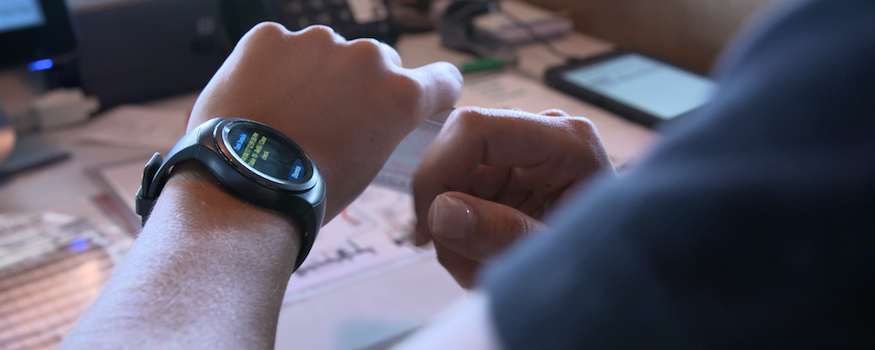Wearables aren’t new to the market, but implementing them in a restaurant can be a daunting task. Off-the-shelf smartwatches aren’t always suitable for enterprise-grade applications, and administrators need a system to ensure that watches can communicate with one another and the network. The best path to implementation is to identify your goals, select the right technologies and establish a framework for measuring performance and fostering continuous improvement.
Identify Your Objectives
Recent research from Oracle reveals more than half of restaurants expect their staff to be using wearables in the next five years. Wearables can be used to communicate specialized guest information to front-of-house staff, track real-time metrics on the dining floor, facilitate guest requests and alert servers of mobile payments. They also offer managers more information on the go so they can spend less time in the back office and more time with guests and staff.
One of the first steps to implementing wearable devices is to identify your specific pain points and how you’ll use wearables to address them.
Buffalo Wings & Rings Restaurant, a full-service restaurant in Mason, Ohio, implemented a wearable pilot program late last year. Ed Carlin, the general manager, said a persistent problem was that wait staff wasn’t always checking with customers in the appropriate time frame. He wanted to use smartwatches to gain visibility into and improve the time and performance of tasks.
Improve Customer Experience with Wearables
Learn how Buffalo Wings & Rings increased revenue and customer satisfaction with the Gear S2. Download Now
The restaurant’s objectives were to send notifications to waitstaff when food and drink orders were ready, tables needed to be checked or cleaned or it was time for a manager to greet the guests. The goal was to build a “framework” of automated reminders and accountability that ensured everyone was doing what they needed to at any given point in time. “The really needed a system that would give reminders to help keep their memory straight,” Carlin said.
Select Equipment and Software
Once you’ve identified your end goals, the next step is to identify the right equipment and software for the organization.
Enterprise-grade wearables need to be ergonomic, have long battery life and be rigid enough to endure the wear and tear of the workplace. You’ll also need to select a customizable, cloud-based software solution that can sync with devices and facilitate communications. It will be important to evaluate if there are specific software features that are absolutely necessary for your organization.
One easy way to ensure you’ll have the right setup is to partner with a technology firm. At Buffalo Wings & Rings, Carlin partnered with Hipaax, a zero-code, cloud-based custom smartwatch platform. Hipaax used the Samsung Gear S2 smartwatch, a wearable device that works over a Wi-Fi network without the need for a paired phone.
Deploy and Measure Results
After the watches and solution are selected and programmed, the next step is to prepare for deployment and train staff to use the wearables. Learning to use the wearable on the dining floor is relatively simple, but there is always a chance there will be some unforeseen complexities when putting them into play. To combat a potential learning curve, education is key.
Privacy and safety can be a concern as unprotected wearables can offer a backdoor vulnerability to a restaurant’s POS system. Samsung indicates that wearables without authentication protocols can be vulnerable to a data breach. Using a security feature, such as the Knox security platform built into Samsung Gear smartwatches, will play a big part in reducing security risks of such devices.
Managers will also want a routine for charging and securing wearables along with a system to continually measure performance. Establishing benchmarks before putting wearables on the dining room floor can help determine if you’re meeting your objectives, and it can encourage continuous improvement.
By tracking performance, Buffalo Wings & Rings learned they had reduced average table turnover time by five minutes, enabling them to serve an additional 10 tables for every 150 tables seated. Carlin said it resulted in “significant improvement” in customer experience, the time in which tables received their food, higher daily revenues and faster resolution of customer requests.
Wearables can be a big booster of productivity in a restaurant environment but proper implementation is key. Establishing objectives, selecting the right technologies and establishing a framework for measuring performance can help ensure your campaign is a success.
From healthcare to hospitality, see how wearables can transform the workplace.


